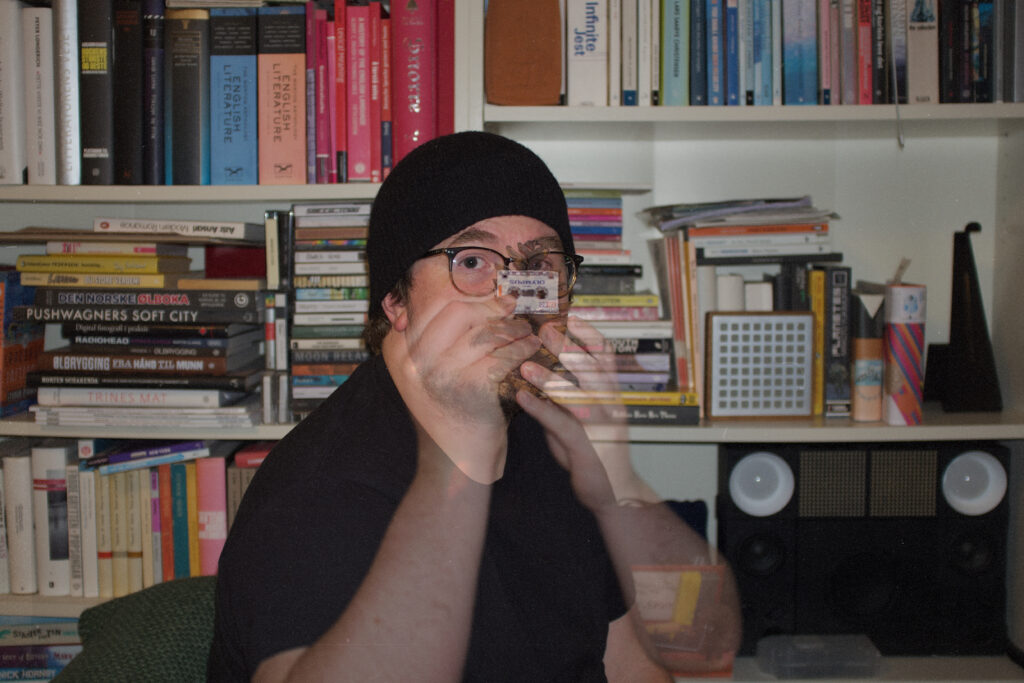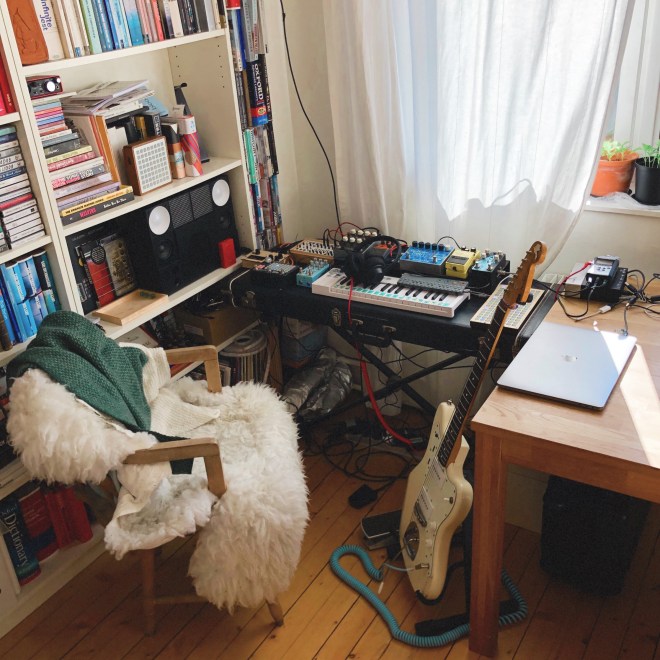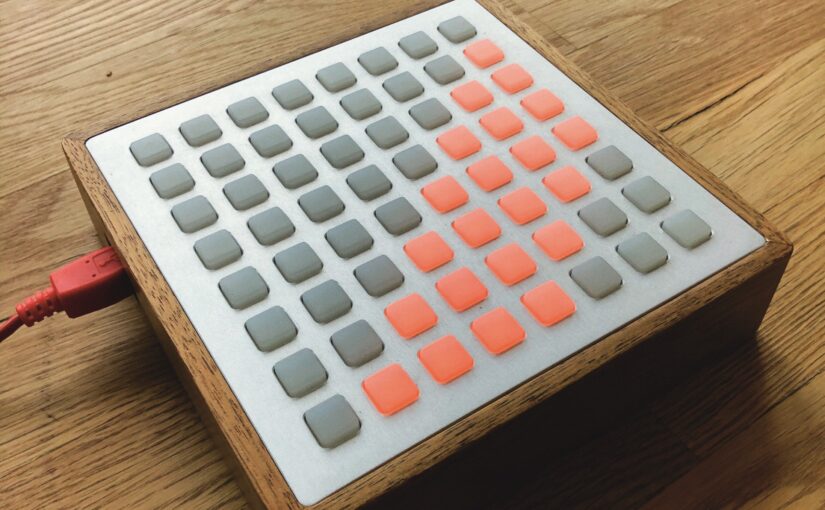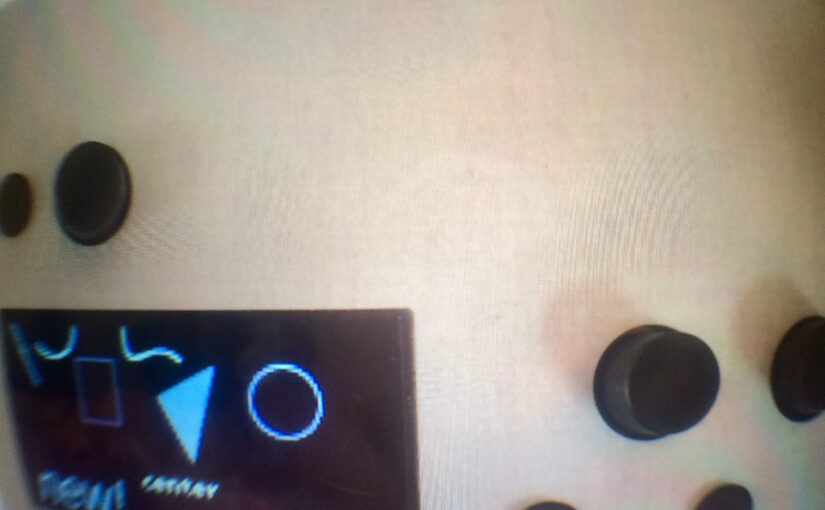1. Favourite knob/fader/switch on a piece of gear and why?

64 grid 
128 grid
These things always change. But the monome “Series” 64 grid has the most wonderful switches/buttons. Unfortunately, I don’t use it that much these days as I’ve made a DIY 128 grid. But the buttons on the DIY grid are less nice than the 64. Not only do they feel nice, but they represent a blank canvas. No visual cues to pull you in any direction until you load up a script or an app.

Also, Chase Bliss Pedals have knobs that feel great. The traction of these knobs makes them feel sturdy and precise.
2. Do you have an ‘almost’ perfect bit of kit? What would you change?

My fates. Fates runs monome norns, ORAC and soon Organelle patches. I am unfortunately not the most skilled in coding. But the communities based around these ecosystems make this device close to perfect. The amazing sequencers, samplers, loopers etc. that one can use here without having to open a computer is wonderful. There is not much I would change. I just need a device to connect to my Fates that lets me organize how I send/receive midi to all my Midi devices.
3. What setup do you bring on holiday/tour/commute etc.?

OP-Z (for making tunes) + microcassette Dictaphone (for sampling) + iRig1 (to get samples from Dictaphone to the OP-Z easily) + a USB to lightning adaptor to records from the OP-Z to my iDevice. I really love the sound of oversaturated tape samples.
4. What software do you wish was hardware and vice versa?
I used to wish for “Ableton in a Box”. But I can’t imagine having a piece of hardware that would have that many possibilities, when recording I prefer to have some limitations and return to it for editing, mixing, mastering and some overdubs. I’ve felt a strong disconnect to computers as a creative music tool for many years, but recently I discovered the amazing Felt Instrument Lekko and Jasno(and soon Blisko I hope). I have never felt such an immediate connection to software instruments. They both feel amazing and the textures they produce almost feels tangible, but for now I don’t mind using them as software. They have been my main sound source into another piece of software I recently discovered, Fantastic Voyage. It is a software 4 track recorder, looper and creative fx unit with a patch matrix. It is like a magic box; you patch up something, send it some audio and the results are instantly amazing.

5. Is there anything you regret selling… or regret buying?
I traded away my Chase Bliss MOOD for an Empress ZOIA some months back, I really miss the MOOD. But the ZOIA is also wonderful, and it can do almost anything you want. But the MOOD is really unique.
6. What gear has inspired you to produce the most music?
Discovering monome grids and Brian Crabtree’s mlr script and all the variations of that changed my whole approach to making music. I am not a person who sits down and write songs, I like to explore sounds and textures by looping and stacking them, trying to keep some sort of harmonic ground. I need something that can capture that, play it back and let me do some mangling of those sounds. And when I got my Fates it enabled me to break away from the computer. The norns ecosystem by monome and all the scripts that are built around the mentality of mlr give me something new to explore every time I sit down and start making sounds and loops.
7. If you had to start over, what would you get first?
If I had to rethink my whole creative workflow, I might have gotten into modular and built a rig around that. But it would still be based around the same sound sources, guitar and OP-Z, just a free-flowing modular effect skiff. I really like it when equipment becomes something you collaborate with instead of control, and I am trying to “let” my equipment function that way at the moment. But I feel like a modular rig would lend itself more to that approach.
8. What’s the most annoying piece of gear you have, that you just can’t live without?

My retired Behringer mixer. I used to hate the thing, but it served a purpose. I decided to scale down to a Koma Elektronik Field Kit and live without multiple AUX buses + input/output galore. And I think this makes me happier. Apart from that, if it counts: cables and batteries. All different shapes, forms, sizes and types.
9. Most surprising tip/trick/technique that you’ve discovered about a bit of kit?
The tape track on the OP-Z is a plethora of fun. Sequencing it and then sending live audio into it is a favorite of mine. Connect whatever you use to get audio (or the internal mic), then select the tape track, then hold the shift button to select what tracks are fed into the tape track, select the module track (so that it lights up yellow/orange) and voila, whatever external audio is being sent into the OP-Z is now also sent into the Tape Buffer.
Artist or Band name?
Aldrin, but I also play in the bands Ben Leiper and Youth Pictures of Florence Henderson.
Genre?
Ambient? Organic Electronic? Soundbathism? New Age Guitar Music? Genres are hard.
Selfie?

Where are you from?
Rjukan, Norway. But currently living with my partner and infant daughter in Oslo, Norway.
How did you get into music?
I guess it started with mainstream mid to late nineties pop music. But I was introduced to the Beastie Boys and The Chemical Brothers at a young age by a friend. And I remember being fascinated by the rich soundscapes that both of these bands would make. I got into creating music some years later when me and a friend discovered that Mogwai’s album «Happy Songs for Happy People» had a version of Cubase with the stems for one of the songs for remixing. We started messing around with that for a while until we decided to record by ourselves. We made an EP of weird noisy instrumental music based around very unauthorized samples of dialogue from different films we liked. We actually duplicated a bunch of tapes and sold maybe 10 to people on the internet.
What still drives you to make music?
I have a deep urge to create something. Not necessarily for anyone else to consume, but for my own sake. And sitting in my living room listening to some sort of loop I just made over and over again is very comforting. Of course, I love it if someone else likes my reverb drenched sounds, but I am truly happy as long as I like whatever sounds me and my gear make.
How do you most often start a new track?
All my current stuff is improvised, but it normally starts with guitar looped some way. Then I add loops of other stuff like plucked pine cones, field recordings and whatever sound I find interesting on my OP-Z.
How do you know when a track is finished?
When I stop the Zoom h4n recorder after sitting around listening to the same intertwining modulating loops for about 30 minutes.
Show us your current studio

Not really a studio, more like “the corner by the bookshelf of my living room”.
Best creative advice that you’ve ever heard?
My parents, and especially my father, taught me that you should not care too much about what other people think, the most important thing is that you are enjoying what you do. Lately I’ve been trying to follow the 12 principles of 12k records, and they feel like a complement to that early advice:
- Don’t tell listeners what they want to hear, let them discover that for themselves.
- Treat your audience as they are: intelligent, passionate lovers of art and sound.
- Evolve constantly, but slowly.
- Stay quiet, stay small.
- Strive for timelessness.
- Never try to be perfect. Beauty is imperfection.
- Simplicity. Anti-Design.
- Never try to innovate, be true to yourself, and innovation may happen.
- Explore sound as art, as a physical phenomenon — with emotion.
- Develop community.
- Be spontaneous.
- Everything will change.
Promote your latest thing… Go ahead, throw us a link.
I stream on a semi regular basis on twitch.tv/aldrinsound, follow me on Instagram or Facebook for updates.
[Editor: Do you have a favorite tip, trick or way of working with any of the gear from this interview?
Then throw a comment below…]










